Buying a tent can be an overwhelming process the first time around.
In this tent buying guide, we’re going to help you decide which tent is right for you and your style of camping. We’ll help you choose a tent based on: sleeping capacity, seasonality, tent style and shape, materials & construction, optional extras/features and more.
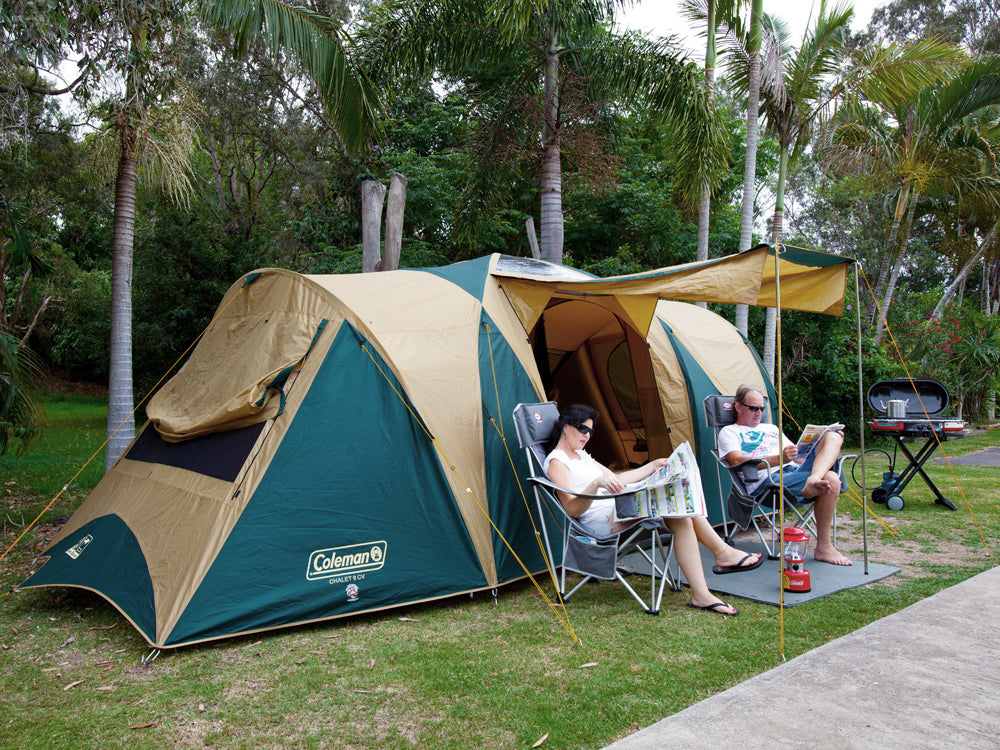
Tent sleeping capacity
A tent’s advertised sleeping capacity won't often accommodate that many people comfortably. This is because tent manufacturers base sleeping capacity on the average amount of space a person’s body takes up, not allowing for extra room for gear or personal space.
As a general rule, it’s a good idea to go at least one size up if you want to feel comfortable on your camping trip and have room for your gear. While lightweight backpackers will usually stick to the sleeping capacity listed on the box, families may want to go two or even three sizes up depending on how much living space they think they’ll need.
2-3 person tents are great options for children, whether they are off on school camp, scouting/guides, or old enough to want to sleep in their own tent. They offer enough room for a single bed and their bag and with a 3 person tent they can even bring a friend with them. They're also a great size for singles or couples when they need something a bit smaller for events, festivals, etc.
We've found that most couples are comfortable in a 4 person tent as they normally fit a queen size bed and some gear. Tents this size and up are also often tall enough to stand up in. Some even go bigger and choose a tent with two rooms - one for their bed and one for their gear.
A lot of families with two or three children opt for the larger 2 or even 3 room tents which can range from 8-12 person in size. This allows one room for the adults, and one room for the kids (with the third room being used as a communal/storage room).
As for the hiking side of tents, it's all about getting the pack size and weight as low as you can. Here you often find people will stick to the recommended size (1 person for a single, 2 person for couples).
If they're not too fussy on weight, you may see people choose a size up. So a couple might choose a 3 person, and someone on their own may choose a 2 person tent. This just allows you more room to store your gear inside the tent instead of out in the weather or under the vestibule where it may still get wet in foul weather. It also gives you a bit more room if you end up cooped up in the tent for an extended period in foul weather.
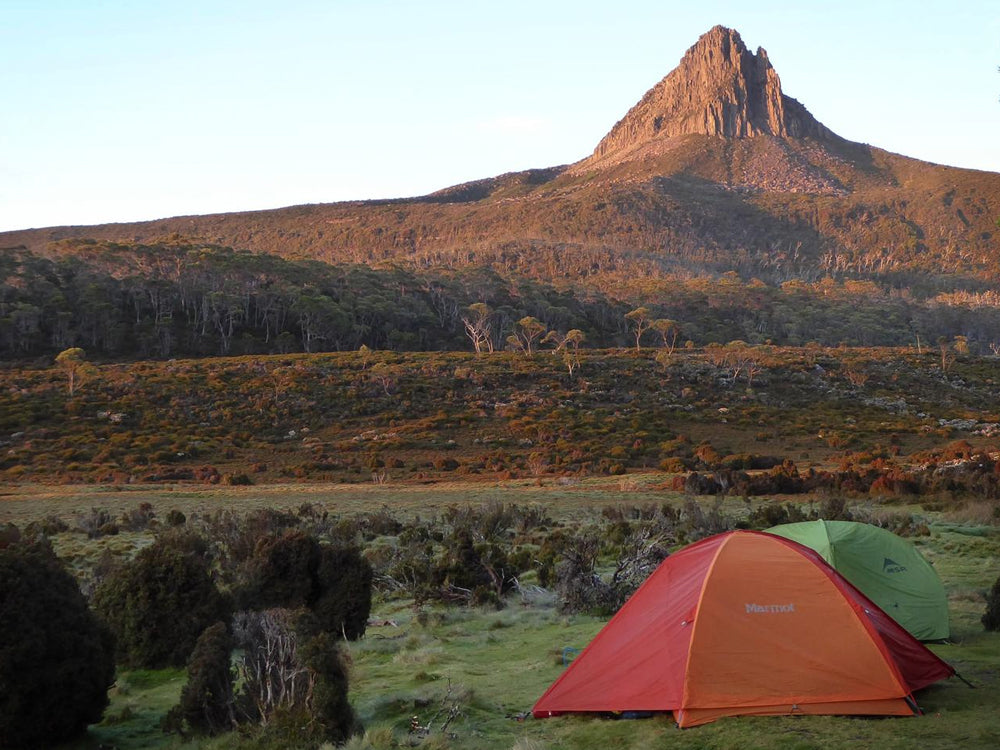
Marmot and MSR tents on the Overland Track
Tent seasonality
Tent manufacturers design tents to handle certain outdoor conditions. A tent’s seasonality rating tells you how good it is at keeping you warm and dry. The higher the rating, the better suited that tent is to withstanding harsh, wet and windy weather (or even snow). The higher the rating, the heavier the tent.
Two, three and four season tents - So what do the numbers actually represent?
Two-season tents offer the least amount of weather protection making them suitable only for spring and summer camping. Less weather protection also means less weight, so they are a good choice if you are not expecting rain. But it’s a good idea to have a decent tarp on hand that you can string up if conditions change.
Three-season tents are the most popular tent of the bunch because they offer a great balance between reasonably low weight and decent protection on wet days. Three-season tents are best suited to camping through the Australian spring, summer, and autumn months. Your rain fly should handle moderate to heavy rain. But as we mentioned earlier, a tarp is always great to have for when things get really bad.
Four-season tents are specifically designed to keep you warm and dry all year-round. This makes them more expensive and heavier than tents with lower seasonality ratings on account of the fact that more durable materials are used in their construction.
Four-season tents are even suitable for use above the snow line. They are usually dome or geodesic in shape, eliminating flat spots where snow can gather on the roof. These tents are not as pleasant however in dry/hot conditions, as they trap heat inside making things hot and stuffy.
While you will only ever experience four seasons in one day, there are in fact five-season tents available online. These tents are made for the cold. If you are intending to spend all of your time at high altitude camping in snowstorms and high winds, a five-season tent offers the ultimate protection against the elements.
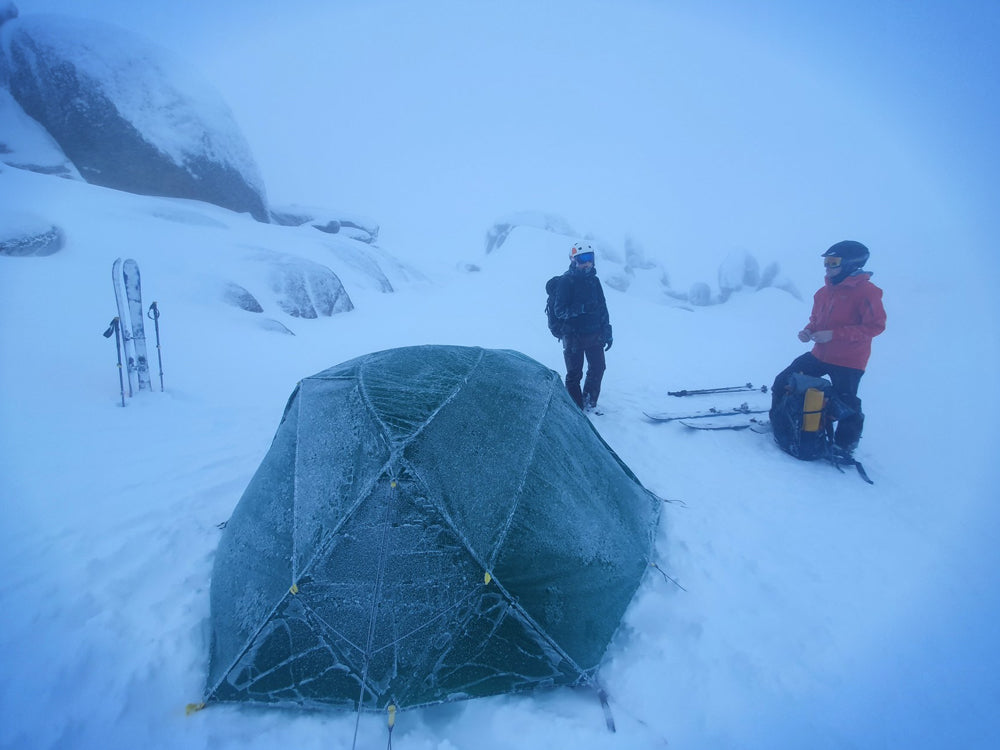
Mont tent in snowy conditions
Tent Shape and Style
When asking yourself, ‘which tent should I buy?’ it’s important also to consider which tent shape is best suited to your style of camping. Tent shape will have an impact on weight and in some cases cost.
Dome tents
Dome tents are the most popular tent style because they are easy to set up, relatively lightweight, and hold up well in bad weather on account of their bell shape. Dome tents are often also more affordable than other options.
Larger dome tents often have multiple internal rooms, separated by walls that can be zipped open or closed. They are usually made of lightweight fabric such as nylon or polyester.
The structure itself uses at least two flexible tent poles which are often made from materials such as fibreglass or aluminium. This allows them to bend into interlocking ‘U’ shapes creating the characteristic dome appearance. The fabric is then pulled over the poles to create the internal space.
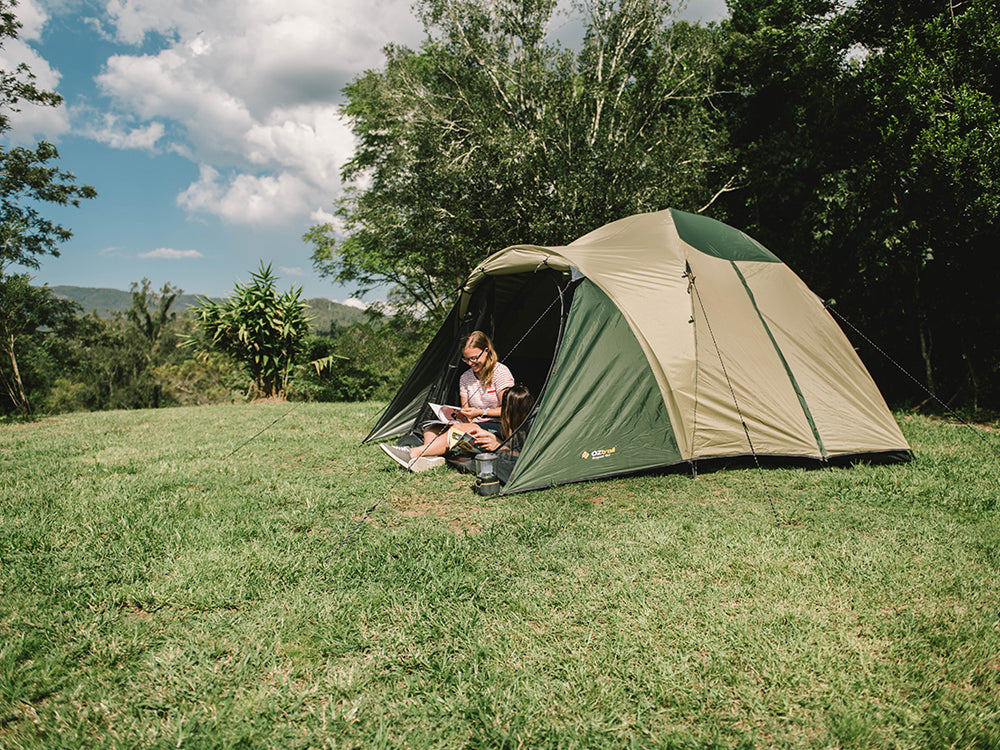
An OZtrail 4 Person Dome Tent
Cabin tents
Once the most popular form of family tent, rigid-frame cabin tents used to be more popular due to their durability and reliability. Whereas dome tents employ flexible tent poles, frame tents use lengths of rigid steel to make up the external structure of the tent. This makes them heavy, but also very durable and allows the structure to form a greater range of shapes. Square walls are a possibility! Frame tents function more like traditional living spaces and provide the greatest amount of headroom of any tent allowing the inhabitants to walk in and out without crouching.
Cabin tents are also often made from heavier materials such as polycotton or canvas. This and the steel frames make these tents heavier and often a bit more expensive.
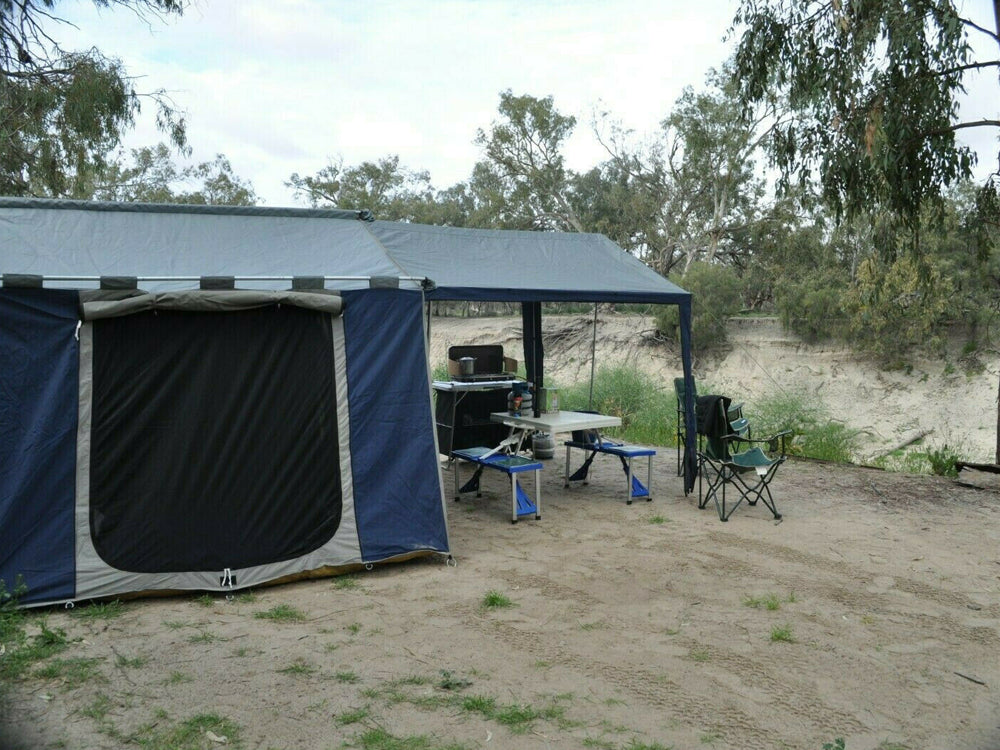
OZtrail 12'x9' Cabin Tent
Instant up tents
Quick-pitch or instant up tents have been around for a while but are really only just becoming a practical option for Australian campers. Instant up tent technology has improved dramatically over the last couple of years to the point where they are sturdy enough to handle even three-season conditions.
As the name suggests, quick-pitch tents use an integrated tent pole system that allows them to be set up very quickly. Simply unfold the tent, pop out the tent pole sections and peg it to the ground.
Some of the instant tents are the most expensive of the bunch, however if camping is something you are going to be doing a lot of, then it is worth it in the long run to invest in one. Some of these like the Oztent RV's and Black Wolf Turbo Tents will serve you many, many years. Some of us own these tents and are going 10+ years...
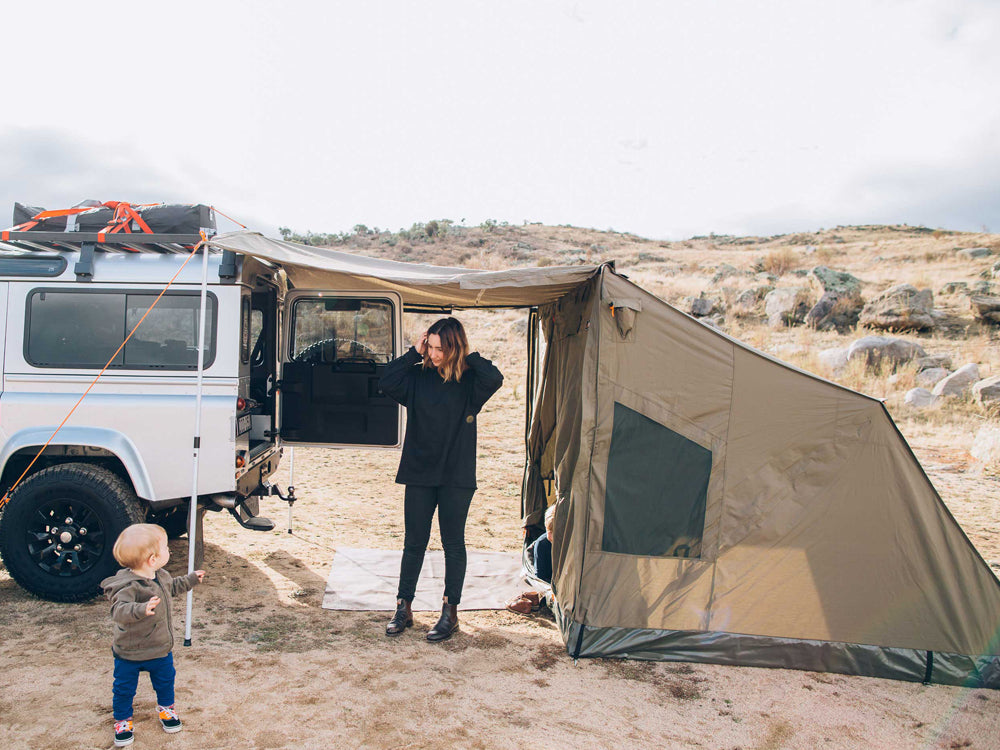
Oztent RV - one of the original 'quick set-up' tents
Hiking tents
An extremely light and compact form of tent designed to be carried to your sleeping destination on foot. Hiking tents come in a range of shapes and sizes but are typically designed to sleep up to three people. These come in many shapes and sizes. More on these later...
Geodesic tents
Usually reserved for use in extreme weather conditions, geodesic tents are so called because they are formed by a network of interlacing poles forming geometric substructures that make them incredibly stable. Mountaineers and adventurers use these tents when at extremely high altitudes to ensure they don’t get blown away in violent alpine conditions.
This same design is also used in some larger dome style tents (think 6-12 person size) and are worth considering if you are looking at buying a dome tent of at least a 6 person size as a simple dome tent without the geodesic frame are known for not being the best at handling winds.

Coleman 9 Person 'Geodesic' Dome Tent
Ridge tents
The ridge tent is the classic, triangular tent. The basic ridge tent shape is formed using one pole at each end and a crossbar pole to create the roof. Ridge tents function very well as small individual shelters but, because the walls slope down at a steep angle, they don’t provide much headroom.
Not a very common shape these days, but you do see one every now and then.
Tipis (tepee, teepee)
One of the most iconic tent shapes around, we all know a tipi when we see one. Due to their simple construction, the traditional shelter of the native American people is becoming increasingly popular as an alternative tenting option. It is not uncommon to see luxury tipis set up at music festivals, weddings, or caravan parks, offering people a more up-market ‘glamping’ experience.

Malamoo Teepee Tent
Swags
A swag is a small, portable shelter for one (or sometimes two). They are usually made from canvas and feature an built-in mattress. Most swags stand under a metre high, requiring campers to crawl in, but provide good insulation and can be perfect for those favouring a minimalist style of camping that is quick and easy to set up and pack away.
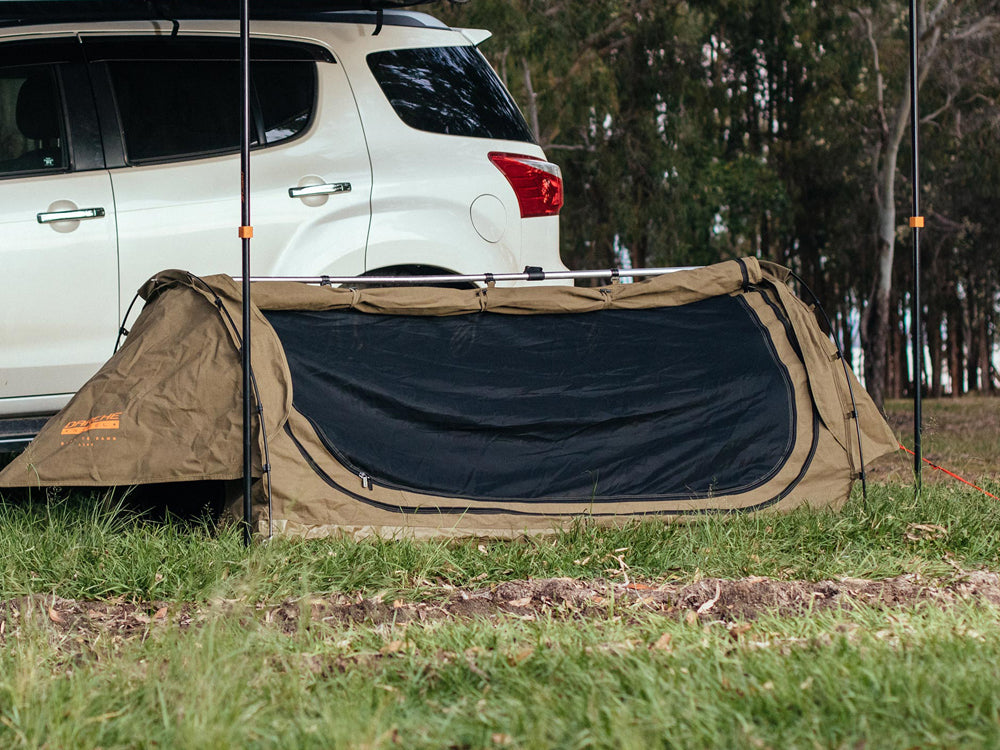
A Darche freestanding swag
Roof-Top Tents
Another increasingly popular arrangement is Roof-Top Tents. As the name implies, these tents are usually fixed to the roof of a car (or sometimes a trailer) and usually fold away in half and are stored on roof racks. They usually unfold and include a double size mattress. Like swags, they are small internally and require campers to crawl in. Some also include an annexe that covers the ladder entry and allows for a little more protection and privacy. The downside to a Roof Top tent is that if it is mounted on the roof of a car, you will need to pack up anytime you want to drive off, even if it's just to go to the servo for some ice!

Darche Roof Top Tent
Tent Materials and Construction
Tent materials vary in terms of durability depending on their seasonality and price. Tents with higher seasonality ratings often cost more and have a higher denier count. Denier is simply the weight in grams of 9,000m of the fibre. The higher the denier, the heavier and more durable that tent’s fabric will be.
When comparing tents, be sure to check the denier to see which is likely to be more durable.
UV protection is another feature to look out for. Polyester based fabrics used on tent flies and inners will deteriorate faster than canvas tents. Most modern synthetics will be treated with some kind of UV-protective compound so make sure you look for this in the tent’s specifications.
It’s a good idea to also check the construction of tent parts like pegs, guy ropes, and the tent’s bag. Are they well made, or will they need upgrading immediately? This will affect the overall cost of the tent.
We like tents with carrying bags that are a bit bigger than the tent itself once packed because they make the tent easier to pack away and transport.
What do Hydrostatic Head Ratings Mean?
A tent’s product description should at least offer the hydrostatic head (or water head rating) rating of the tent’s fly in millimetres. (e.g. 2,000mm). Waterhead ratings give a good indication as to the level of waterproofness that the tent provides.
As a general guide, you should be looking for a rating of at least 2,000mm on your tent’s fly. The floor needs to have a much higher rating to prevent water seeping through, ideally around 5,000-15,000mm.
Seam Sealing
As well as a good waterhead rating, you also want your tent fly’s seams to be sealed to prevent water seeping through the stitching, soaking your inner and ruining your camping trip. Make sure that all seams are sealed so that any water running down the fly won’t gather and seep through. Often you will see some tape on the inside of the fly along the line of stitching. This is a tape sealed seam and is the most common way of sealing the seams. Also make sure to check more than just the main few lines of stitching, as some don't seal all of the seams.
This is less important for canvas tents, as the cotton stitching in the canvas swells when wet to seal itself. This is one of the reasons it's important to determine whether a "canvas" tent is truly canvas or not, as a true canvas tent should be made from 100% COTTON and not contain other materials such as polyester which is commonly found in today's market. These tents that contain polyester in the "canvas" are usually referred to as "polycotton canvas" and are usually a little bit cheaper and lighter than true canvas tents as they use a blend of cotton and polyester to make the fly materials. These tents need to be coated in some sort of waterproof coating (usually PU) and need to be seam sealed.
Tent Flooring
Your new tent’s floor needs to be durable, waterproof, and well looked after, because it’s the one thing between you and a very damp night’s sleep. The floor is the most used part of a tent and has to withstand footsteps and abrasion from furniture and the ground below.
Look for a tent with a bucket style floor as they offer much greater protection in the rain.
Your tent’s floor needs to be longer than you! This might seem obvious, but if you are very tall, make sure you go for a tent that is longer, especially if you like to stretch out when you sleep.
Regardless of how good your new tent’s floor is, a lot of companies recommend you purchase a custom-built footprint for your tent. Footprints fit the dimensions of your tent perfectly and are made from completely waterproof fabrics. You could argue that the tent should be built waterproof enough to not need the footprint (which is the case in some hiking tents where they have tried to cut down on weight) but for larger tents, it doesn't hurt to lay something between the tent and the ground just to offer a little more protection from abrasion.
If you decide to use a tarp instead, just make sure that you fold it to fit the dimensions of your floor as any material hanging outside the fly will catch rainwater, allowing it to run underneath your tent and pool under the floor. This can then seep through to the inside of the tent.
Ventilation
Good ventilation is essential, especially in Australia’s often humid climate. The best tents allow you to open windows even with the fly erected, enabling air to flow through the tent, preventing moisture from building up on the inside walls.
Parts, features, and optional extras
Vestibules and Awnings
Many tents, even simple dome tents, come with a vestibule that can be pegged out to create a weatherproof compartment, perfect for storing your gear separate from your sleeping space. Others come with a simple awning that is propped up with additional tent poles to create a small rain/sunshade for outdoor living. Some tents will offer a larger and more substantial awning where you can even add walls for extra protection and privacy.
This is another area where a tarp comes in handy. Line the floor inside your vestibule with a tarp keeping your gear out of the mud.
Tent Poles
It’s worth finding out what a tent’s poles are made from, and how they work before you buy. Cheaper tents often scrimp on tent pole quality which can lead to frustrating breakages in the middle of the night when the wind picks up.
Tent fly
A fly is pulled over the tent and pegged to the ground around its base acting as a waterproof layer. A tent fly also provides extra insulation as it traps heat in the space between itself and the main body of the tent.
Tent pegs
Pegs are used to secure the corners of the tent to the ground so as to keep it from being blown away in heavy winds. Tent pegs are also used to secure the tent fly via guy ropes, pulling it out from the main body of the tent allowing water to drain away from the base when it rains and offering better strength in the wind.
Guy ropes
Guy ropes give the tent stability. They act as additional support, putting pressure on the tent at even intervals and are pinned to the ground using pegs to help keep it secured firmly to the ground. Guy ropes are also attached to the tent fly keeping it taut to allow rainwater to run away from the tent itself.
Tarps
Tarps (or tarpaulins) are useful optional extras often used in conjunction with a tent.
A tarp can also be laid on the ground beneath your tent to provide extra protection in wet or muddy conditions.
Footprints
Footprints behave in the same way as a tarp, however, they are specially designed to protect your tent from the ground you are pitching it on. Footprints are made from durable, waterproof material helping your tent to wear for longer. Some tents offer footprints as an optional extra and a few hiking tents include these with the tent.
Tent bags
The tent bag keeps everything stored in one place. It’s important to keep your poles, pegs, fly, and inner packed carefully in a durable tent bag to ensure your tent’s longevity.
Optional Accessories
Some tents offer some additional accessories that are not necessary but can often improve the experience. These include things like Walls for your awning, Footprints, Fly's, Connectors, and more.
It is also worth considering if other tent options include these 'optional' accessories as standard and how this affects the price.
It’s important to remember that your tent is your new home in the great outdoors, and while we are not suggesting you go out and spend thousands of dollars first-time (although it’s a worthy investment), all it takes is some consideration and research to ensure that you’re not left out in the cold with a tent poorly suited to the job.






Leave a comment